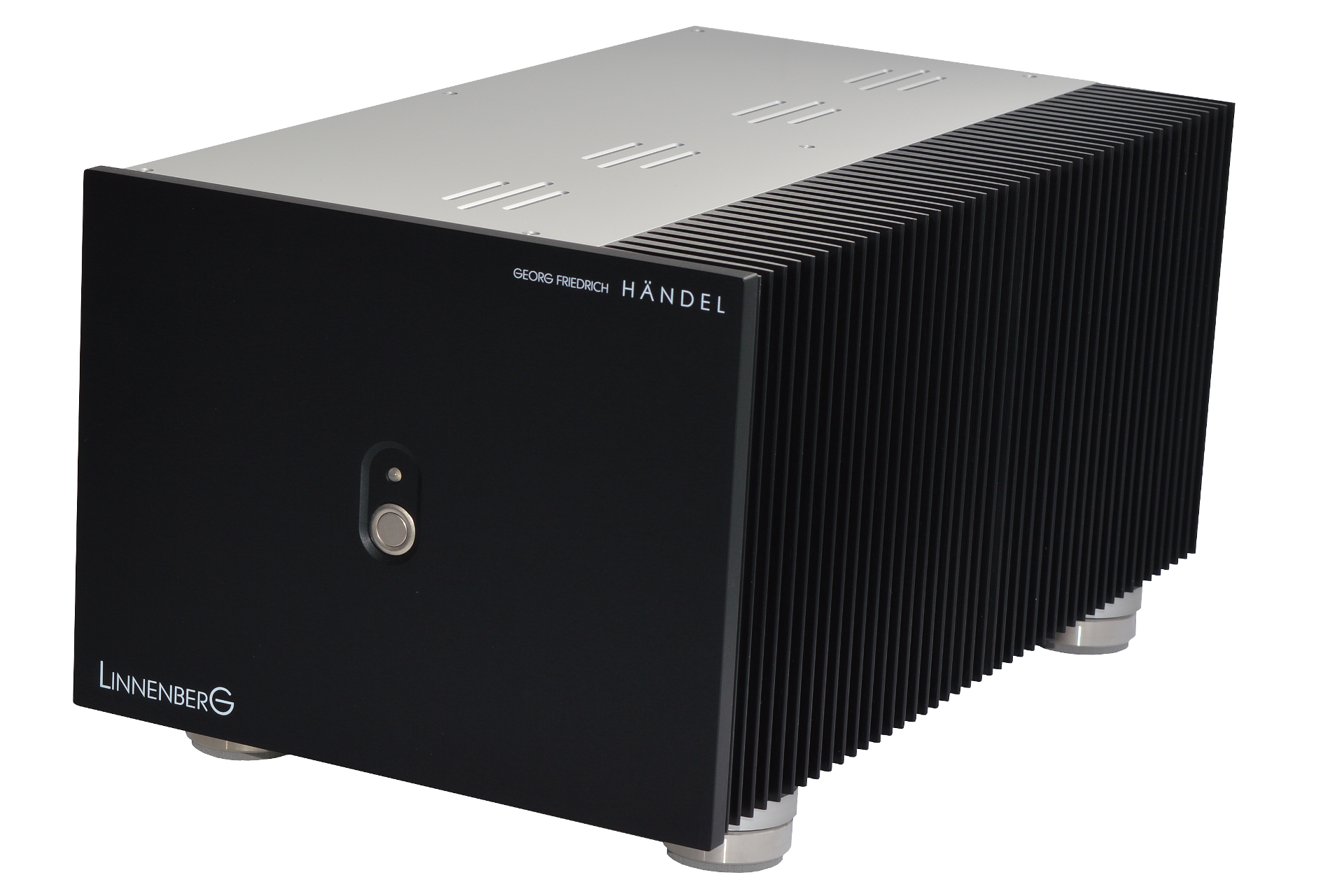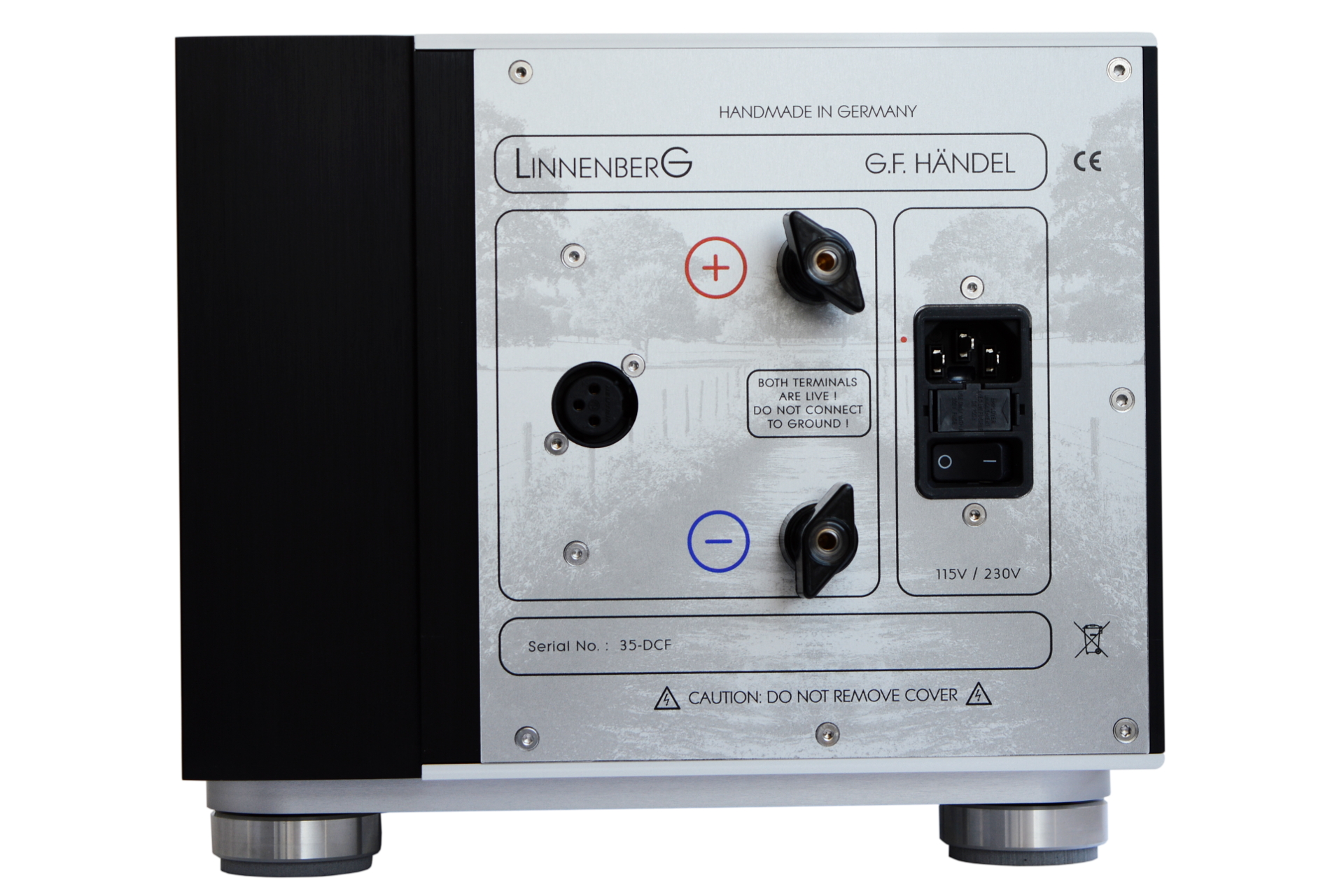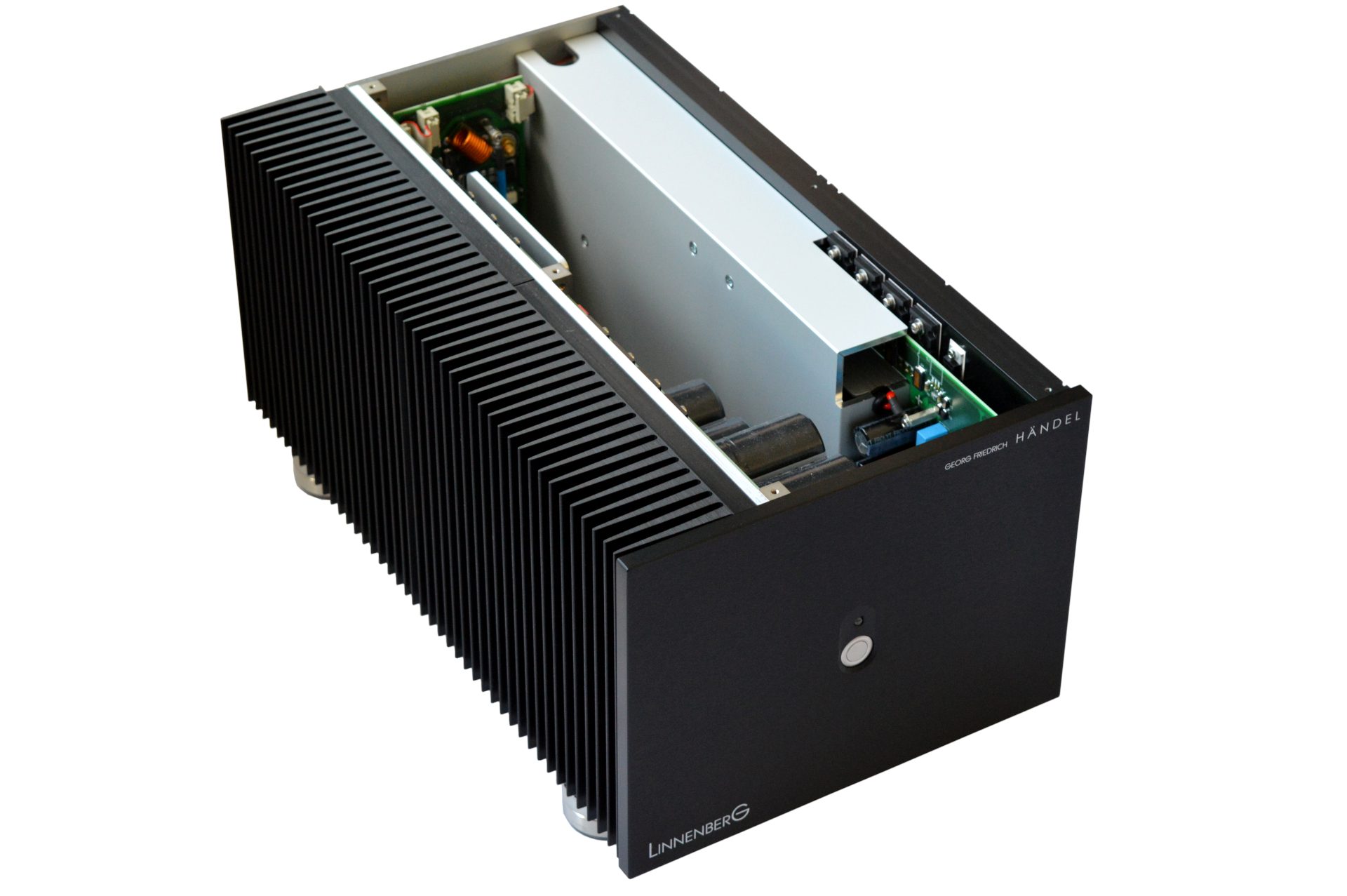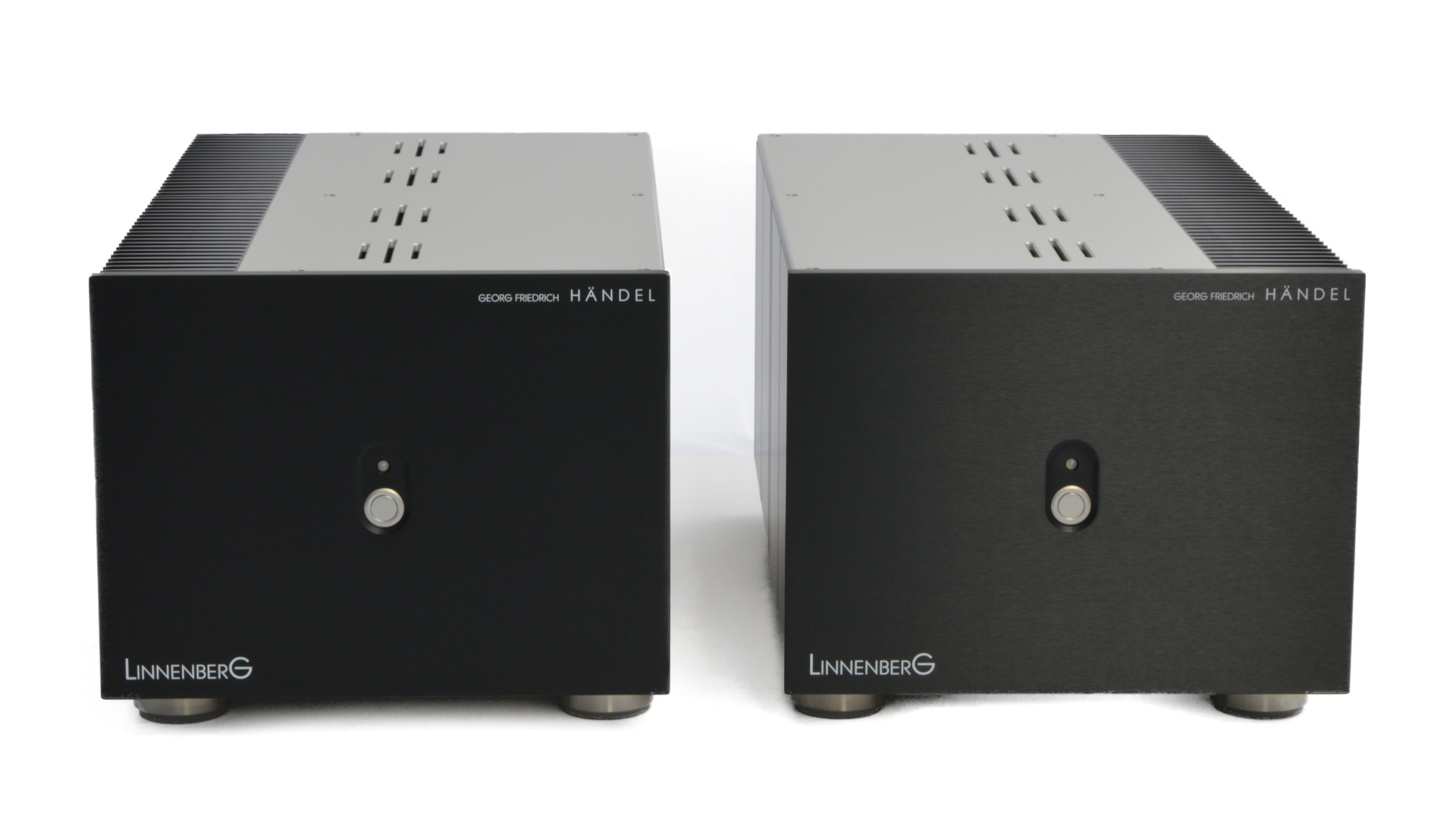GEORG FRIEDRICH
HÄNDEL
- State of the art mono power amplifier -
HÄNDEL is a class A power amplifier. As energy efficient as the design is, the quiescent current flowing through the output transistors generates heat. One square meter (1 m2) of heatsink surface per monoblock dissipates a lot of energy, allowing HÄNDEL to run as cool as possible.



